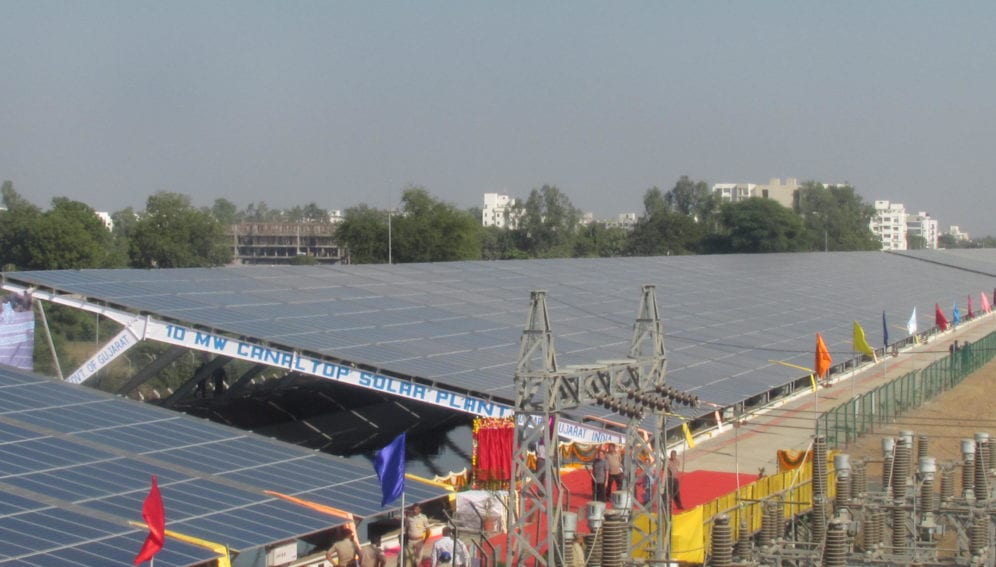By: Athar Parvaiz
Send to a friend
The details you provide on this page will not be used to send unsolicited email, and will not be sold to a 3rd party. See privacy policy.
[VADODARA] A 3.6 kilometre stretch of solar panels in the district of Gujarat state not only generates 10 megawatts of electricity, but also prevents water, flowing in the canal below it, from evaporating.
After inaugurating this unique ‘Canal Top Solar Power Plant’ earlier this month (January) United Nations Secretary General Ban Ki-moon said he could see “in the glittering panels the future of India, and the future of our world. This facility demonstrates that one solution can have multiple benefits.”
The cooling effect of the water in the canal improves efficiency of the solar panels, besides saving millions of litres of water per year from evaporation, Umesh Chandra Jain, chief engineer of the project tells SciDev.Net.
Jain says there is no need to store the electricity produced by the plant as it is directly fed into the state electricity grid. By siting the plant on the outskirts of Vadodara city, a major consumer, transmission costs are greatly reduced, he adds.
“This concept,” says Jain, “shows that you don’t need to put solar plants on agriculture land in remote rural areas and go through the time-consuming and expensive process of putting up transmission lines or get into land-acquisition issues.”
The canal is part of the massive Sardar Sarovar project, a hydropower and irrigation scheme that, when complete, will water 1.8 million hectares (4.45 million acres) of largely arid land. Jain said the solar plant cost of US$18.3 million could be recovered in 13 years and that there are plans to replicate the project across Gujarat.
Rajendra Kumar Pachauri, chief of the Intergovernmental Panel on Climate Change and director general of The Energy Research Institute, New Delhi, said it was early days yet and that there were issues such as excessive dust and sand in the atmosphere reducing the life of the equipment. “Upkeep would be important,” he tells SciDev.Net.
Commenting on India’s plans to raise investment for solar power to 100 billion dollars by 2022 and increase the share of solar energy in the national energy mix to 10 per cent, Pachauri said India is well-placed to tap solar energy “because we have the benefit of abundant sunshine and skilled manpower.”
This article has been produced by SciDev.Net's South Asia desk.














